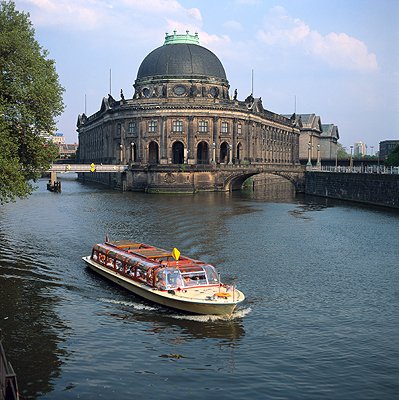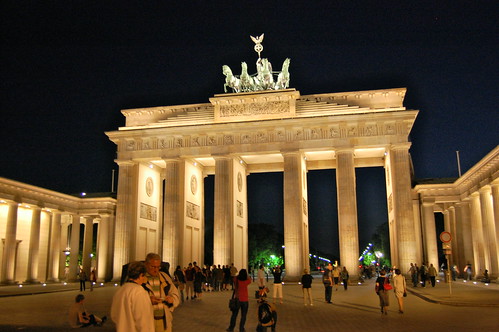
Berlin, capital of Germany, and one of the most important European capitals. It is only 70 km from the border between Germany and Poland. It has 3,400,000 inhabitants.
How come?
The easiest way to reach the German city, is by plane. Berlin currently has two airports: Schoenefeld Airport in Berlin, the largest city. Otherwise come to the capital is by car or bus (departs from most European capitals). Another method is by train but there are no direct train from Spain, therefore, is due to change in France or Switzerland.
How do I move?
The city of Berlin has a subway to get around better for it. Other public transport are buses with a frequency of 10 minutes, trams and trains with a frequency of 3 or 4 minutes in urban areas. Moreover, there are transport at night from 0.30 to 4.30, except on Sundays when the schedule is increased to 7:00.
Where to Stay?
In hostels and hotels.
What to see?
The Berlin Wall: the monument or one of the most important city. Remains are still preserved, as in the mill (where we can see more than 1 km of the wall).
The Brandenburg Gate: It is a monument to a few meters from the wall, located in the area between the wall and the control towers of the police. This monument is decorated with a chariot driven by Eirene Goddess. Moreover, this area we can find 2711 cement blocks dedicated to Holocaust victims.
The Reichstag is one of the most visited monuments in the city. In 1999 he was restored preserving the outside walls but revamping the interior and adding a glass dome, which offers a nice view of the city.

Church Kaiser Wilhelm Memorial or ‘Memorial Church «was built between 1891 and 1895 and is dedicated to William I. It was destroyed in World War II up being a great tower that has been preserved without being restored to observe the damage of war, and where there is, at the top, the «Liberty Bell» also built a new church next door. Is open seven days a week with hours from 9.00 to 19.00.
Church of St. Nicholas is the oldest building, with approximately 800 years old. Located in the neighborhood that bears its name, suburb of San Nicolas. Some areas are the Romanesque church, but also has traces of the Gothic or Renaissance. Also suffered some damage during the Second World War but was rebuilt between 1981 and 1986.
Berliner Dom: built in the nineteenth century as the Kaiser Wilhelm II wanted a cathedral for the Protestant church. Also damaged in the war, as almost all buildings in the capital, and although the area was rebuilt lost funeral.

Potsdamer Platz, is one of the most important squares, but more importantly, of the city. It makes the Berlin Film Festival (Berlinale). It contains important architectural buildings, the headquarters of large companies (like Sony) and the German train company.

Unter den Linden: the main boulevard of the city. Start at the Plaza de Paris (located west of the Brandenburg Gate) where we observe the art academy, the Hotel Adlon (well known in the city) and the embassies of France and America. After traveling 1.5 Km east Schlossbrücke can see the bridge that connects the Museum Island (an island in the Spree river, which owes its name to the many museums that are in it) and east of the city center. In a square near this area is the Catholic Cathedral in Berlin, right next to the Opera.
Museum Island: there are 5 museums. The buildings are nineteenth century. The 5 museums are: Altes Museum or Old Museum (named World Heritage by UNESCO, where we can find a collection of jewelry, ancient Greece and 20 columns based on the Roman Pantheon), the Neues Museum, or New Museum (where the works are evicted from the former for lack of space), Alte Nationalgalery (it is the Museum of Contemporary Art), the Bodemuseum (Numismatic Museum) and the Pergamon Museum (in which archaeological remains are housed).
Alexanderplatz: a large square in the center of Berlin, near the Palace of the Republic. It is also surrounded by several buildings among which the Fernsehturm, the highest TV tower in Europe (368 meters) and the World Clock is rotating continuously and displays the time from around the world.
Tiergarten, a park that is located in the downtown. Initially a hunting area even today is the largest park in town.

Botanical Gardens: one of the largest in Europe. It has about 22,000 plant species, in addition, he found a botanical museum with plants ready and a special library. It is located in the districts of Dahlem and Lichterfelde.
Bon Voyage!
Leave a Reply
You must be logged in to post a comment.
Recent Comments